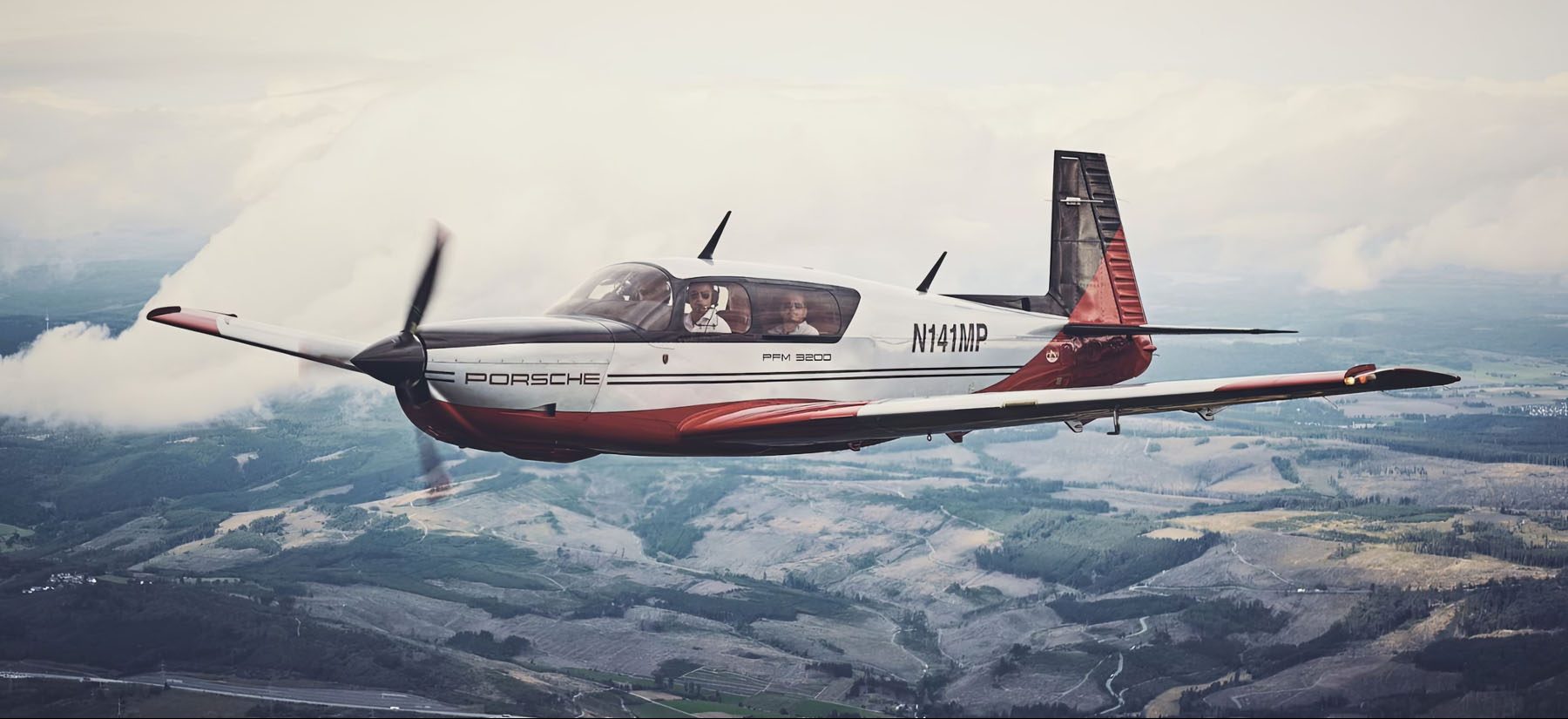The PFM 3200-powered Mooney is legendary among aviators. They all want this ‘Porsche of the skies’ – and today there are only five that are airworthy anywhere in the world. We had the extraordinary opportunity to take a ride in one.
Oh, the boxer engine note is unmistakable. But what a different feeling it delivers in this setting! The three-bladed propeller cuts the air with a whirring sound, pulling from the front rather than pushing at the rear. With a long-legged and slightly swaying gait, we pull out of Paderborn Airport’s Hangar II. Slowly at first, then ever faster, the Mooney M20L PFM (Porsche aircraft engine, or ‘Porsche-Flugmotor’ in the original German) rolls down the runway. At a mere 74 decibels, whisper-quiet for its class, the plane lifts off after just 400 metres – this is all it needs to get off the ground with a take-off weight of just under 900 kilograms, plus four occupants.
No Subscription? You’re missing out
Get immediate ad-free access to all our premium content.
Get Started



